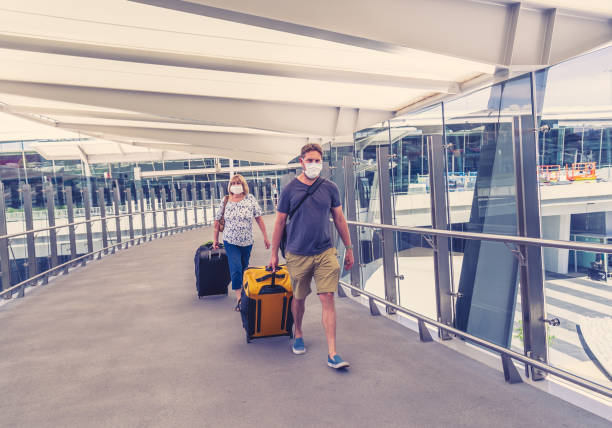Please note that the information we provide in this article on Australia RRV is current as of the date of publication, and the DHA regularly updates rules and regulations. Kindly ensure that you check the official updates before making any decisions, or speak with an immigration lawyer for the most up-to-date information, as laws and conditions are subject to change.
If you’re an Australian permanent resident who’s been overseas for a while, the Australia RRV (Resident Return Visa) could be your golden ticket back to the country. The Australia RRV acts as a bridge, allowing you to retain your permanent residency status even if you’ve been out of Australia for an extended period.
There are two subclasses of the Australia RRV:
- Subclass 155, which has a travel facility of up to five years.
- Subclass 157, which has a travel facility of up to three months.
Australia RRV is granted to individuals who have been Australian permanent residents for at least two years, or have compelling and compassionate reasons for their absence from Australia.
Applying for an Australia RRV: Step-by-Step
To apply for an Australia RRV (RRV), follow these step-by-step instructions:
1. Check your eligibility. Ensure you meet the residency requirements and demonstrate substantial ties to Australia. You can check out our basic guide article for Australia RRV here.
2. Gather the required documents. Prepare the necessary documents, such as a completed and signed Form 1085, a copy of your valid passport with a valid residence visa, and any other supporting documents, such as proof of personal, employment, or business ties to Australia. The next section will enumerate the required documents for the application.
3. Pay the application charge. The application fee for this visa currently is AUD465 to apply online and AUD545 to apply on paper.
4. Submit your application. Submit your application and supporting documents to the Department of Home Affairs (DHA) office in Australia or through an Australian diplomatic office if you are outside Australia.
5. Wait for a decision. Applications that meet the residence requirements are generally processed within 5 working days from when they are lodged. But those that do not meet the residence requirement take longer to finalise. You can check out this visa processing times guide for more information.
6. Travel to Australia. If your application is successful, you can travel to the country with your Australia RRV.
Please note that this is a general guide, and the specific requirements and process may vary depending on your individual circumstances. You must diligently check the most up-to-date information from the Department of Home Affairs website or consult with an immigration expert before applying for an Australian RRV.
Documents Checklist for Australia RRV
When applying for a Resident Return Visa (RRV) in Australia, you will need to provide various documents to support your application. The following is a checklist of the common documents required for an RRV application:
Basic Requirements
- Completed and signed Form 1085 – Application for a Resident Return visa (RRV).
- Payment of the Australian Government Visa Application Charge.
- Identity documents such as national identity card and copy of valid passport with valid residence visa.
- Evidence of permanent residency, particularly if you migrated to Australia before 1990:
- the pages of your old expired passport(s), which should include your photo, personal details, passport issue and expiry dates, and evidence of permanent residency wet stamps or printed visa labels
- any Certificate of Evidence of Resident Status (CERS) issued to you before this product was abolished on 1 June 2016
- any separate permanent visa (or permanent entry permit) documentation issued to you overseas before and / or on your arrival in Australia
- any historical documentation you have received to this effect from the National Archives of Australia (NAA).

Substantial Ties Documents
Substantial ties documents (e.g. business, cultural, employment, personal ties), including:
- compelling reasons for any absences from Australia of 5 or more continuous years or
- if you are outside Australia and were an Australian citizen or permanent resident less than 10 years before the application, compelling reasons for any periods of absence that total more than 5 years from the date you last departed Australia. Please note that you can only count the time you have spent in Australia as a permanent visa holder but not any time you have held a temporary visa or bridging visa towards the two years.
- statement that shows your ties are both substantial and of benefit to Australia
- property ownership – rates notices or property contracts
- personal ties – birth certificates, citizenship certificates, or evidence of permanent residence of close family members who reside in Australia
- employment ties – work references, tax payment, and payrolls from the organization in Australia.
Family Member Documents
Evidence to show you are an immediate member of a family group where the family head holds a current RRV, particularly:
- For de facto relationships –
- evidence that your relationship is registered by an Australian State or Territory
- enough documents to prove you have been in a de facto relationship with your partner for at least 12 months before you apply.
- For both married and de facto –
- evidence that you are in a genuine and continuing relationship (such as joint bank account statements, billing accounts in joint names, joint leases or mortgages, documents that show your partner has lived at the same address as you.)
To know more about the documentary requirements, head on to the list of documents provided by the DHA.

Get Legal Help from a Migration Lawyer
Increase your chances of success by obtaining legal advice from migration experts. Immigration laws are intricate and subject to frequent updates. A qualified migration lawyer from JB Solicitors can stay abreast of these changes and ensure that your application is compliant with the latest regulations, significantly increasing your chances of obtaining a visa or permit.
Here are some additional tips for finding the right migration lawyer:
- Look for a lawyer who specialises in your specific area of immigration law, such as family visas, Australian citizenship applications, refugee law, or employment visas. The right lawyer can also help a former Australia citizen or a former Australian permanent resident who want to go back to Australia. They can also renew their last permanent visa.
- Find a lawyer who can transition your temporary visa into a permanent visa.
- Read online reviews and testimonials from previous clients.
- Schedule a consultation to discuss your case and get a sense of the lawyer’s experience and approach.
- Ask for a fee quote upfront so you know what to expect.
Contact us today if you need more help with resident return visas.
